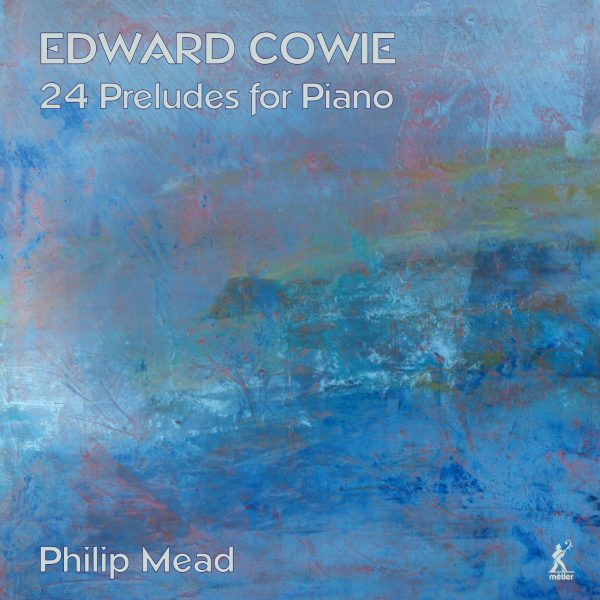Art Music Lounge
British composer Edward Cowie, whose recent work often involves imitations of bird calls, here temporarily leaves the aviary to present 24 piano preludes. These are, as you can see from the above header, divided into four sections subheaded “Water,” “Air,” “Earth” and “Fire,” and each prelude within each group has its own individual title. This, by the way. is not a new album but a reissue of a recording first released in 2008.
The first of these, “O Brook,” does indeed ripple like a country stream but is little more than a series of fast right-hand figures. I was much more intrigued by the second prelude, “Kiama Blowhole,” which may be related to a whale. And indeed, as the cycle continues, the music becomes ever denser in chord choices and structure, and thus more interesting for me. In the liner notes, Cowie make a bit of a connection between his own works and the cycle left us by Chopin, but don’t be fooled. This music is only Chopin-like in the series of keys he uses. Otherwise, it is pure Cowie, and extraordinary Cowie at that. As the composer himself admits, they are largely improvisatory in character, but I have to say that although pianist Philip Mead plays them extremely well, his tight, almost metronomic approach somewhat detracts from a feeling of improvisation. A bit more relaxation in his approach, some looseness of rhythm in the fast passages, would have been welcome. Mead achieves a feeling of spontaneity in the slower preludes, such as No. 5 (“Maxime Beach in D Major”), but the faster ones are rattled off with a bit of an impatient air.
Nonetheless, as I say, this is first-rate music for the most part, engaging the listener and always surprising him or her with the progression of his musical mind. Just listen, for instance, to the “Tennessee River” prelude (No. 6) for a good idea of what I mean in both respects. But as they say, in the land of the blind, the one-eyed man is king, and these preludes are so good that even having somewhat rushed performances of them is better than none at all.
And, as advertised, the preludes do relate musically to the themes stated in the score; the “Air” pieces being lighter and with more space between notes than those representing water. Cowie’s harmonic language is non-tonal but not completely atonal; it just sounds that way because he uses unusual chord positions, often with the root note missing, to achieve a tonally “unbalanced” sound without alienating the average listener…too much. He also writes the top line in such a way that it, too skirts the edges of atonality, dipping a toe in here and there in each bar, without immersing the music completely in it.
Without knowing the locales referenced by Cowie in these pieces—unlike him, I am not a world traveler and have never been able to afford traveling abroad in my entire life—one must use one’s imagination, but even without the specific references to place the music struck me as both serious and whimsical at the same time, and I liked that about it very much. The first of the “Earth” preludes, for instance, sounded very much like an “Air” one to me. But so what? The music was interesting, and that’s all that really matters.(And interestingly, the second “Earth” prelude, “Crackington Haven,” is one of the most completely tonal pieces in the entire series.) “Glencoe (Scotland),” one of the craggiest pieces in the series, must indeed refer to a pretty craggy piece of land in a relatively craggy country. Oddly, I heard a connection, harmonically, in the opening of “Shenandoah Valley” (one of the few places I have been to, since my family originally came from Pennsylvania and we visited there fairly often) with Debussy’s Claire de lune. By contrast, “Bush Fires in E-flat” moves like lightning, and here I felt that Mead’s approach worked particularly well.
I really enjoyed this album. The music is both complex and intimate, which sucks you in and forces you to pay attention to everything Cowie is doing.
@divineartrecordingsgroup
A First Inversion Company
Registered Office:
176-178 Pontefract Road, Cudworth, Barnsley S72 8BE
+44 1226 596703
Fort Worth, TX 76110
+1.682.233.4978












